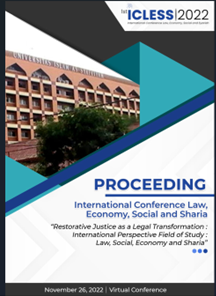Absence Practice Due to Latifundia Violation
Keywords:
Land, absence, latifundiaAbstract
Article 33 paragraph (3) of the 1945 Constitution which reads: "Earth and water and the natural resources contained therein are controlled by the state and used for the greatest prosperity of the people." In this regard, for the sake of legal certainty in the control and utilization of land, it is necessary to seriously regulate the provision, arrangement, distribution and maintenance of land. In the UUPA 1960, there are at least a number of things that often stick out and become problems, namely: the maximum limit for land ownership, absentee land ownership, land ownership monopoly, and determination of compensation for land in the public interest. These four things trigger the emergence of various land conflicts, both directly and indirectly, and are difficult to resolve. Implementation of restrictions on land ownership is still not as expected. This can be seen from absentee/guntai land ownership which is often known but difficult to prove for various reasons. Meanwhile, absentee/guntai ownership of agricultural land is strictly prohibited by the BAL. This paper examines the absenteeism prohibition and latifundia practices from the UUPA 1960 and the reality on the ground. The approach used in this study uses the approach put forward by Peter Mahmud, namely the Statute Approach and the Conceptual Approach. The results of this study indicate that the implementation of Article 33 paragraph (3) of the 1945 Constitution and also Articles 7, 10 and 17 of the 1960 UUPA have not been implemented optimally. Likewise with the implementation of Permen ATR/BPN 18/2016 concerning Control of Agricultural Land Tenure. The limitation in this research is that land that is controlled exceeds the limit set by law.



